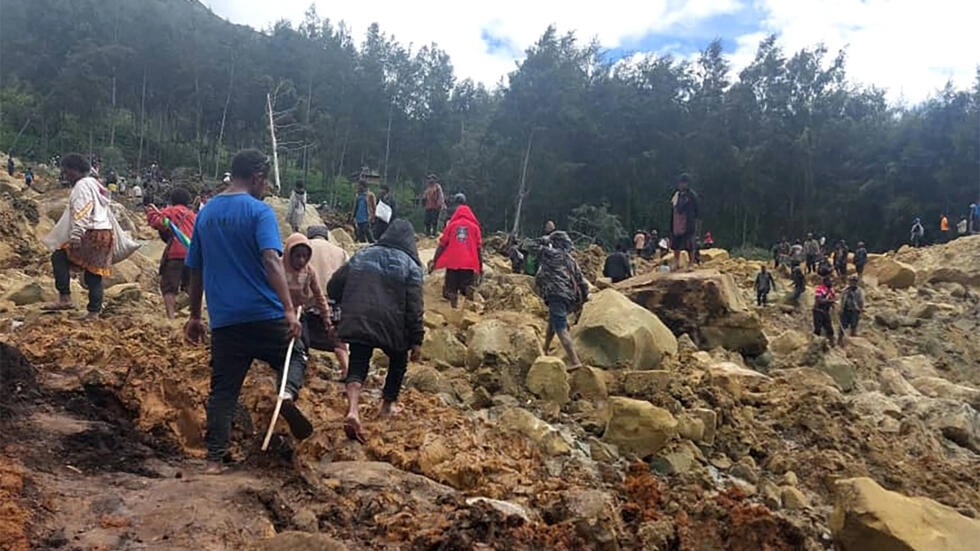PORT MORESBY, Papua New Guinea — A devastating landslide has buried an estimated 150 houses in the hillside village of Enga province, leaving over 670 people presumed dead, according to the UN migration agency.
The catastrophe struck in the early hours of Friday, May 24, 2024, morning, obliterating nearly the entire village and the people sleeping inside.
“The situation is terrible with the land still sliding. The water is running and this is creating a massive risk for everyone involved,” said Serhan Aktoprak, a UN migration agency official based in Port Moresby.
“There are an estimated 150-plus houses now buried,” he added, noting that “670-plus people are assumed dead.”
The once-bustling village, home to more than 4,000 people, served as a trading post for alluvial miners in the highlands region.
The landslide has displaced more than 1,000 residents, with food gardens and water supplies almost completely destroyed.
“People are using digging sticks, spades, large agricultural forks to remove the bodies buried under the soil,” Aktoprak said.
Aid agencies and local leaders initially feared between 100 and 300 people may have perished.
However, the death toll was revised upward as disaster workers realized more people were living in the village than initially estimated.

As of Saturday night, five bodies had been recovered from the debris. The landslide, a mix of car-sized boulders, uprooted trees, and churned-up earth, was estimated to be eight meters (26 feet) deep in some areas.
Locals believe the landslide was triggered by heavy rains that have saturated the region in recent weeks.
Papua New Guinea, known for having one of the wettest climates in the world, experiences its heaviest downpours in the humid highland regions, according to the World Bank.
In addition to the natural disaster, tribal fighting has erupted along the only remaining route into the disaster zone.
“The violence is not related to the landslide,” Aktoprak clarified, but it has necessitated a “security escort” from Papua New Guinea’s military to ensure the safe passage of aid convoys.
Images from the site show barefoot workers using shovels and axes to shift the earth, while others sift through the mangled piles of corrugated iron that once provided shelter. Much-needed heavy machinery is expected to arrive at the site on Sunday to aid in the recovery efforts.







